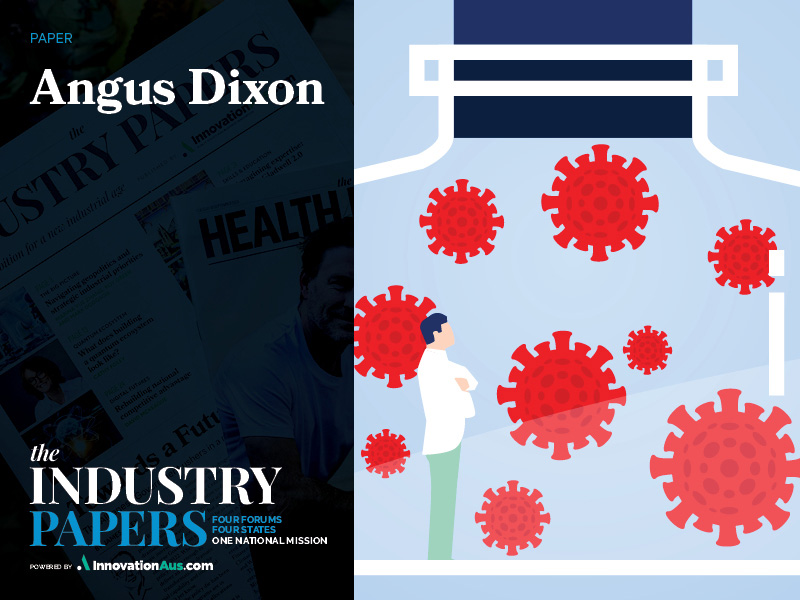Healthcare-associated infections (HAIs) represent a critical challenge in modern healthcare systems worldwide.
These infections, contracted by patients during medical treatment, contribute significantly to global morbidity and mortality, claiming approximately 1.5 million lives annually and resulting in long-term disabilities. In Australia, the situation is dire, with 170,000 cases and 7,583 deaths each year, a rate that has remained stagnant for decades.

The Daylight Foundation is on a mission to change this narrative, spearheading a campaign to drive HAIs to zero through policy changes, research, and strategic partnerships.
Our approach is grounded in the belief that with the right tools, knowledge, and commitment, we can make HAIs a relic of the past, thereby saving lives and improving the quality of healthcare for all.
The impact of HAIs
The economic and social toll of HAIs is staggering. Globally, HAIs cost an estimated US$130 billion each year, with 136 million cases reported annually.
These infections lead to approximately 26 million disability-adjusted life years (DALYs) worldwide, a reflection of the long-term impact on patients’ health and well-being. In Australia, HAIs cause more deaths than influenza, road accidents, brain cancer, breast cancer, and prostate cancer combined.
The burden of HAIs extends beyond the immediate effects on patients, as they also place a significant strain on healthcare systems and economies.
The policy position: transforming the fight against HAIs
To effectively combat HAIs, the Daylight Foundation is advocating for a fundamental shift in how these infections are addressed. We propose a set of policy steps to create a healthcare environment where infections are prevented rather than just treated.
Our policy recommendations aim to set robust performance-based standards and foster an ecosystem of accountability and excellence in healthcare settings.
1. Robust data collection and measurement
Accurate and detailed data collection is the cornerstone of effective HAI prevention. The Daylight Foundation aims to capture comprehensive data at the hospital level, categorised by procedure type and
HAI risk factors.
2. Independent research
Unbiased, independent research is essential to uncover the best solutions for reducing HAIs. The Daylight Foundation plans to conduct various research studies, including longitudinal studies to monitor infection rates over time, case-control studies to identify risk factors, and cohort studies to track patient outcomes post-intervention.
This research will lay the groundwork for evidence-based policies and practices, ensuring that healthcare providers have the most up-to-date and effective tools to combat HAIs. By investing in this research, we hope to steer innovation toward infection prevention and management.
3. Leverage strategic partnerships
Collaboration is key to driving improvements in patient outcomes. The Daylight Foundation will work with non-profits, healthcare organisations, research institutions, and policymakers to share data and best practices.
By engaging with policymakers, we will advocate for regulations and guidelines based on the latest evidence. Strategic partnerships will also enable us to pool resources and expertise, enhancing the impact of our initiatives.
Through these collaborations, our motivation is to create a united front against HAIs, fostering a culture of shared responsibility and continuous improvement in healthcare settings.
4. Test and refine policy frameworks
To ensure the effectiveness of our proposed policies, there will be pilot interventions in select hospitals.
These pilot programs will focus on high-impact areas, such as surgical site and catheter-associated infections, and will involve mandated staff training on new infection prevention protocols.
By evaluating these policies in real-world settings, we can identify potential challenges and refine our approaches to maximise their impact. The insights gained from these pilots will inform the development of broader policy frameworks, ensuring that our recommendations are practical, scalable, and effective.
5. Develop strategic plans
A national framework for HAI prevention and control is essential for achieving our goal of zero HAIs.
We propose to develop comprehensive guidelines for hospital accreditation and HAI reporting, advocate for funding and resources to support HAI reduction initiatives and establish systems to reward best practices while eliminating compensation for hospital-acquired complications.
By promoting accountability and incentivising excellence, we aim to create a healthcare system that prioritises patient safety and continuously strives to reduce infection rates.
Daylight Foundation’s roadmap to zero HAIs
To gain a comprehensive understanding of HAIs, we plan to deploy advanced technology to collect and monitor data across all healthcare settings, including public and private hospitals, day surgeries, and aged care facilities.
This data-driven approach will allow us to identify patterns and pinpoint areas for improvement, enabling targeted interventions that reduce infection risks.
By minimising the presence of harmful bacteria, we can significantly lower the risk of HAIs. A key component of our strategy is focusing on reducing bacterial bio burden, which involves implementing stringent hygiene practices, sterilisation protocols, and the use of innovative antibacterial materials and coatings in healthcare settings.
Hospitals should be rewarded for achieving low infection rates rather than compensated for treating infections. By promoting and recognising healthcare facilities that excel in infection prevention, we hope to create a culture of excellence in healthcare.
This shift in incentives will encourage healthcare providers to prioritise infection prevention and continuously strive for improvement.
Reducing hospital admissions through earlier diagnoses and alternative care models can also significantly lower the risk of HAIs. We will advocate for policies that promote outpatient care and early intervention, reducing the need for prolonged hospital stays and the associated risks of infection.
Performance-based metrics are crucial for driving these improvements. Working towards implementing these metrics, ensuring that hospitals are held accountable for their infection rates and incentivised to prioritise patient safety, is a priority.
By establishing clear benchmarks for success, we can foster a culture of continuous improvement and excellence in infection prevention.
Pioneering research for zero deaths
The Daylight Foundation’s research mission encompasses several ambitious projects designed to predict, prevent, and manage infections more effectively. These projects will leverage the latest advancements in technology and medical science to develop innovative solutions for HAI prevention.
Predicting and preventing infections
This is a 12-18-month project which will combine healthcare databases to predict infection risks and improve prevention using advanced technology. By identifying high-risk patients and procedures, healthcare providers can implement targeted interventions to prevent infections before they occur.
Fast tracking diagnosis and treatment
This is a four-year project which will use predictive analytics to fast-track diagnosis and treatment, with patients wearing devices to monitor their health and generate data. This approach will enable earlier detection of infections, allowing for timely and effective treatment that reduces the risk of complications.
AI and NLP for monitoring outcomes
Using AI and natural language processing, this 18-24-month project will monitor patient outcomes and reduce hospital stays. By analysing vast amounts of data, AI can identify trends and patterns that may not be immediately apparent to human clinicians, enabling more effective infection prevention strategies.
Gut health to prevent infections
A four-year study on synbiotics to improve gut health and boost immunity, this project aims to contribute to infection prevention by enhancing the body’s natural defences.
The future
The Daylight Foundation’s mission to reduce HAIs aligns with a global commitment to improving patient safety and healthcare quality. Robust data collection, research, strategic partnerships, and innovative policy frameworks will be brought together to help make HAIs a thing of the past.
The future we envision is one where healthcare providers have the knowledge, tools, and resources to prevent HAIs before they occur. It is a future where patients can receive care without fear of contracting an infection, and where healthcare systems are aligned around the world in their commitment to zero HAIs. We are confident that this future is within reach.
Our commitment to driving HAIs to zero is about real people, real lives, and a better world. We can create a future where no one must suffer from a preventable infection, and where healthcare systems worldwide are safe, effective, and compassionate.
Angus Dixon, CEO, Daylight Foundation. Angus has more than 30 years’ experience with medical technology companies in the Asia Pacific region. He is now focused on reducing healthcare infections to help save lives and he is passionate about shining a light on the data, to reduce the incidence and impact of HAIs. An Australian charity, the Daylight Foundation, has a mission to leverage the research and findings internationally.
This article is part of The Industry Papers publication by InnovationAus.com. Order your hard copy here. 36 Papers, 48 Authors, 65,000 words, 72 page tabloid newspaper + 32 page insert magazine.
The Industry Papers is a big undertaking and would not be possible without the assistance of our valued sponsors. InnovationAus.com would like to thank Geoscape Australia, The University of Sydney Faculty of Science, the S3B, AirTrunk, InnoFocus, ANDHealth, QIMR Berghofer, Advance Queensland and the Queensland Government.
Do you know more? Contact James Riley via Email.

